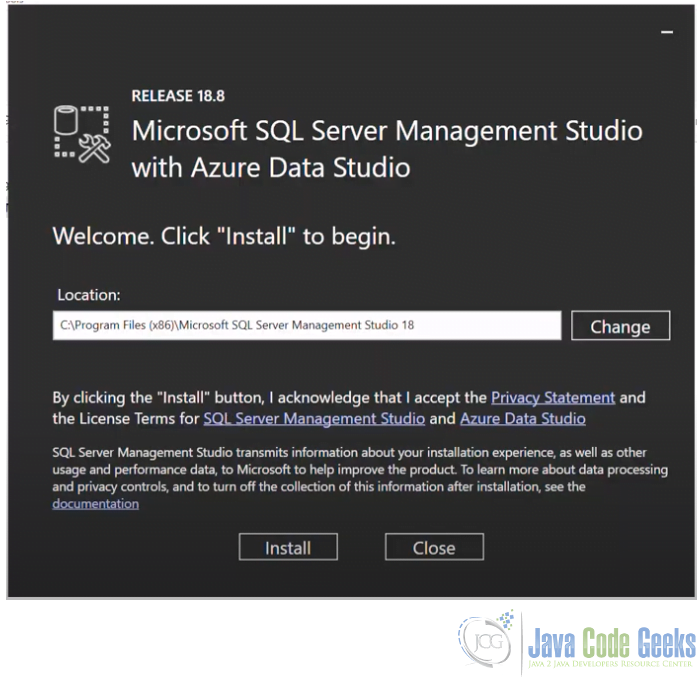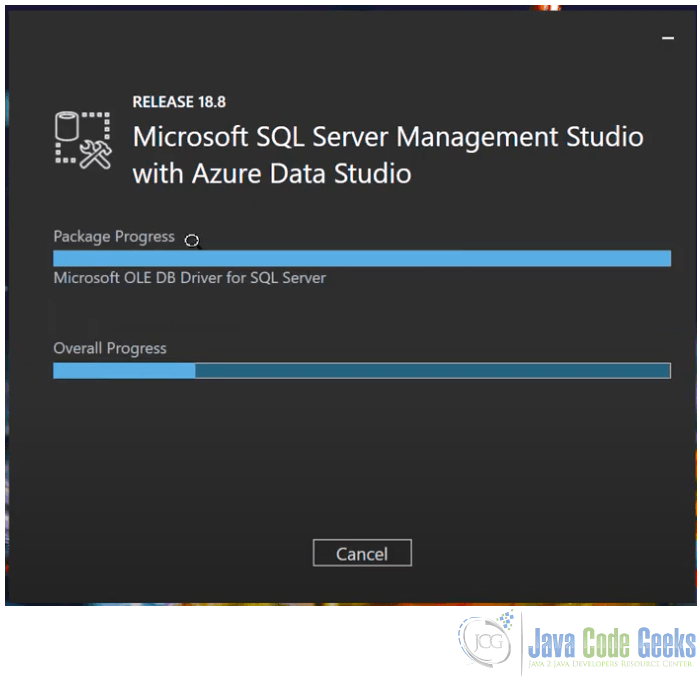Download and Install SQL Server Management Studio
In this article, we’re going to the steps to download and install the Microsoft SQL Server Management Studio (SSMS).
1. SSMS System Requirements
SQL Server Management Studio (SSMS) is a powerful application maintained and distributed by Microsoft that is used for configuring, managing, and administering all components within Microsoft SQL Server.
The application was first launched with Microsoft SQL Server 2005 as the successor of Enterprise Manager from SQL Server 2000 and before.
The requirement to install SSMS is a Windows machine compatible with the version. Also, we need some packages and supplements to support the software:
1.1 Hardware requirements
- 1.8 GHz or faster x86 (Intel, AMD) processor. Dual-core or better recommended.
- 2 GB of RAM; 4 GB of RAM recommended (2.5 GB minimum if running on a virtual machine).
- Hard disk space: Minimum of 2 GB up to 10 GB of available space.
1.2 Software requirements
- Operating System
- Windows 10 (64-bit) version 1607 (10.0.14393) or later
- Windows 8.1 (64-bit)
- Windows Server 2019 (64-bit)
- Windows Server 2016 (64-bit)
- Windows Server 2012 R2 (64-bit)
- Windows Server 2012 (64-bit)
- Windows Server 2008 R2 (64-bit)
2. Download SSMS
For this article, we’re going to download the most recent version of SSMS that is available here. Further, it’s available in the languages below if you prefer:
- Chinese (Simplified)
- Chinese (Traditional)
- English (United States)
- French
- German
- Italian
- Japanese
- Korean
- Portuguese (Brazil)
- Russian
- Spanish
3. Install SSMS
After downloaded, open the installer to follow the steps to install the SSMS. The first step is choosing the location.
Continuing, we’re going to see some package download. Wait until this process finishes.
Finally, once the installation is completed, a restart should be required to conclude the process.
To make sure that the installation ran well, open the Start menu and find SSMS. Then, click to open it and you should see the loading screen and the login window will open to connect to the database.
4. Installation with Azure Data Studio
Starting with SSMS 18.7, SSMS installs a system version of Azure Data Studio by default. However, it works only for Windows.
The Azure Data Studio has also versions to run on macOS and Linux that you can find here. It’s just to download and execute the software.
After extracted (or installed), you can find in the home screen ways to connect to a SQL Server database and execute queries from there.
5. What’s new about ssms
Here I separated a summary of the recently released version of SSMS.
Version 18.9.2
| New Item | Details |
| Azure Data Studio installation integration | Installation of SSMS installs Azure Data Studio 1.30.0. |
| Always Encrypted | Scripting support for Ledger tables. |
| Analysis Services | Support for XMLA endpoint to refresh datasets in PowerBI premium Gen 2. |
| Azure SQL DB | Adds support for backup_storage_redundancy in database create/modify dialogs. |
| Azure SQL DB | Adds create login script support for AAD-based login syntax. |
| Integration Services | Improvement for IR Creation Wizard, Job Migration Wizard, and SSIS package scheduler to support AzureUSGovernment and AzureChinaCloud. |
| Intellisense | Syntax highlighting for External Language Management and Query Store (query_store_plan_feedback, query_store_query_variant). |
The complete information about the release can be consulted in this link.
6. Summary
In this article, we saw a little digest about how to install SSMS. We’ve figured which are the recommended requirements to install it. Also, we could know which languages are available on SSMS and we see some snapshots from the installation wizard.
Finally, I showed some information about Azure Data Studio besides Windows OS and present the general release notes about the latest version of SSMS.
This article was based on Microsoft Official Documentation about SSMS and more details can be found here.
Last updated on Dec. 20th, 2021







